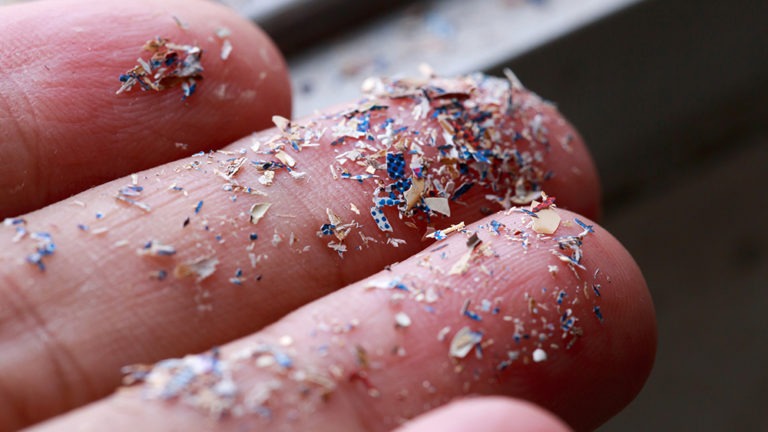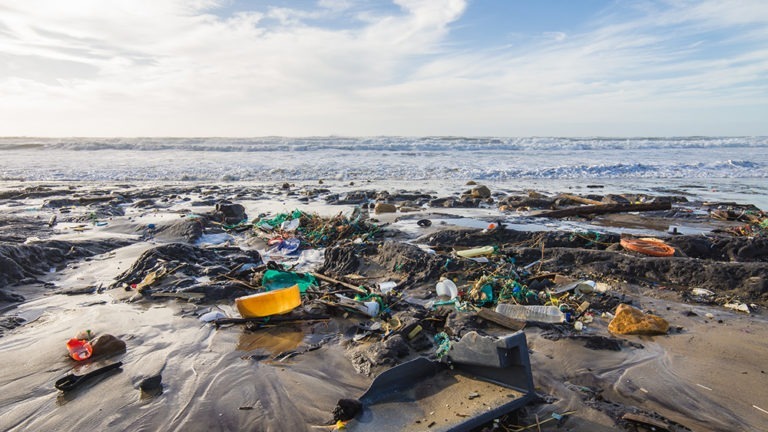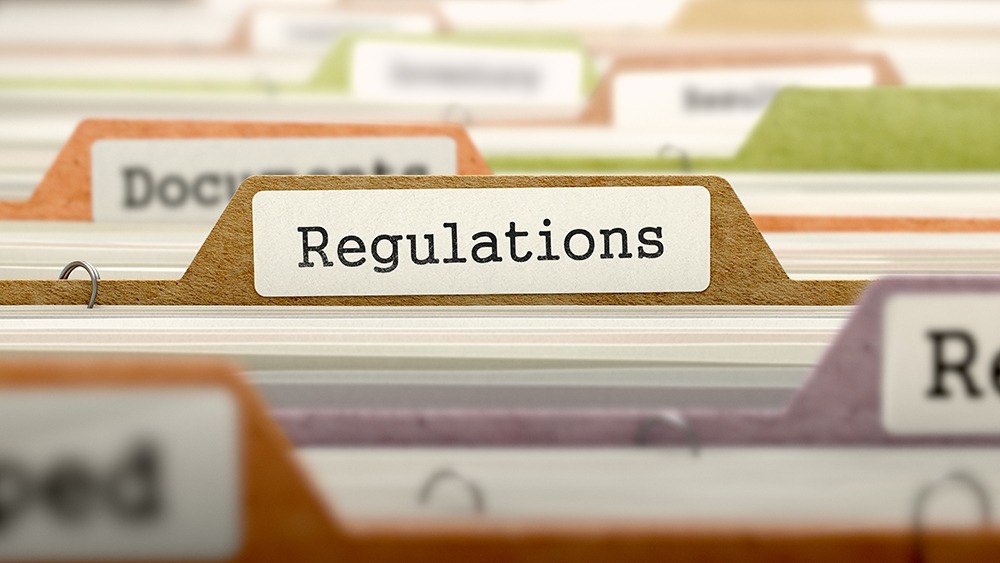The emergence of microplastics as a contaminant of interest is creating a buzz both in the United States and globally. In this article, we review the global interest and regulatory response to microplastics in the environment. As mentioned previously, affected industries include commercial launderers, wastewater treatment facilities, consumer product, and food and beverage manufacturers, the tire industry, and many others.
What are the regulations governing microplastics?
Microplastic regulations are evolving both internationally and domestically with two general response approaches. The European Union (EU) is primarily focusing on removing sources of intentionally produced microplastics from consumer use and production chains, while the United States and Canada are implementing monitoring programs and regulations to better understand the nature and extent of microplastics issues.
Globally
In the beginning of March 2022, the United Nations Environmental Assembly (UNEA) hosted its fifth meeting with representatives from 175 countries to discuss the UNEA Resolution, a legally binding, international “Plastic Treaty” to combat plastic pollution by 2024. The treaty’s goal is to enhance or bridge the gaps of current actions or agreements and to focus on the entire lifecycle of plastics, with special attention to the design and production phases. Towards the end of 2022, a newly formed Intergovernmental Negotiating Committee (the “Committee”) will start composing a draft treaty that is scheduled to be complete by end of 2024.
European Union
The EU set the stage in 2017 when the European Commission requested the European Chemical Agency (ECHA) to evaluate regulatory actions throughout the region to address microplastics. In 2019, ECHA proposed extensive restriction on “microplastics in products placed on the EU/EEA [European Union/ European Economic Area] market to avoid or reduce their release to the environment,” essentially banning the addition of microplastics to products such as cleansers, cosmetics, fertilizers, and others. These restrictions would potentially stop about 500,000 tons of microplastics from being released over a 20-year period. In February of this year, the European Commission opened consultation on microplastic pollution with a focus on microplastic release to the public and stakeholders and a proposed regulation is expected by the end of 2022. Once promulgated, REACH (Registration, Evaluation, Authorization and Restriction of Chemicals) will regulate the approved restrictions.

Meanwhile, to reduce plastic pollution as part of larger efforts for Zero Waste Europe, the EU adopted a single-use plastic ban on 10 specific products that took effect on July 2, 2021. According to news sources, the ban includes plastic bottle caps, cutlery, straws, plates, and Styrofoam food and beverage containers.
Nanoplastics have also been a hot topic of recent scientific studies. An article in Environmental Science & Technology examined “whether nanoplastics could be classified as microplastics, nanomaterials, or polymers for regulatory purposes,” and prompted the European Commission to start amending the definition for nanoplastics. Researchers have studied their environmental and health hazards and argue for their regulation.
United States and Canada
Both the United States and Canada have passed federal laws banning plastic microbeads, a subset of microplastics. The United States passed the Microbead-Free Waters Act of 2015 (MFWA), prohibiting the manufacture, packaging, and distribution of cosmetics containing plastic microbeads. In January 2018, Canada amended the Canadian Environmental Protection Act of 1999 to include Microbeads in Toiletries Regulations.
In May 2021, Canada officially added plastic manufactured items to its list of toxic substances on the Canadian Environment Protection Act’s schedule 1, and in December 2021, the Canadian government released draft regulations to ban single-use plastics including grocery/plastic bags, stir sticks, beverage six-pack holders, cutlery/plates, straws, and food packaging made from plastics. The single-use plastics regulations were open for public comment until early March 2022, and a final decision is anticipated later this year. The government will also work with companies in provinces and territories that manufacture or sell plastic products to introduce them to new standards and targets and make them responsible for their own waste as they move towards a Canada-wide strategy to attain zero plastic waste by 2030.

Seven states in the U.S. have also engaged in legislation banning microbeads, and numerous states have implemented bans on plastic in various forms, including bags, straws, and Styrofoam cups. As states move forward with microplastic initiatives, they are expanding beyond only microbeads. The Great Lakes and St. Lawrence Cities Initiatives, a binational coalition, is active in microplastic studies and tracking regulatory updates, and at least five states are working to address microplastic pollution in water, stormwater, and wastewater. Of these states, California is leading the way with establishing microplastics regulations and monitoring requirements for drinking water. Even so, the U.S. Environmental Protection Agency (EPA) has not yet developed regulations concerning the release of microplastics to the environment.
California
In 2018, California passed Senate Bill 1422 (SB1422), requiring the State Water Resources Control Board (Water Board) to define microplastics in drinking water by July 1, 2020. SB1422 further required a July 1, 2021, deadline to establish standards for analytical methods, lab accreditations, provisions for health-based guidance levels, and the initiation of four years of testing drinking water for microplastics. The Water Board released standardized methods in September 2021 for extraction and analysis of microplastics in drinking water, which we will discuss in our fourth article.
The Water Board adhered to the definition deadline and proposed that microplastics in drinking water are:
“solid polymeric materials to which chemical additives or other substances may have been added, which are particles which have at least three dimensions that are greater than 1 nm and less than 5,000 µm. Polymers that are derived in nature that have not been chemically modified (other than by hydrolysis) are excluded.”
California included bioplastics (compostable plastics derived from hydrolysis) in their first regulatory definition of microplastics, which is broader than ECHA’s definition. California further defined microplastics with size-based classification and criteria to include nanoplastics through large microplastics, including the classification of megaplastics and macroplastics as ranging from 5 mm to greater than 2.5 cm. Particle size criteria may continue to evolve as various states and the federal government evaluate them.

In 2018, California also passed Senate Bill 1263 which requires the California Ocean Protection Council (OPC) to adopt and implement a statewide strategy for lessening the ecological risks of microplastics to coastal marine ecosystems. In response, on December 21, 2021, OPC released the draft Statewide Microplastics Strategy for public comment and finalized the strategy in February 2022 after the comment period ended. The strategy identifies early actions and research priorities to reduce microplastic pollution in California’s marine environment and provides a roadmap for California to manage microplastics pollution with a comprehensive two-track approach that 1) identifies actions to reduce and manage microplastics pollution and 2) outlines research priorities to inform future activities.
ITRC guidance
The Interstate Technology and Regulatory Council (ITRC) is developing a guidance document to address the nature and extent, distribution, health effects, sampling, and treatment of microplastics, as well as current regulations. The ITRC recently submitted a survey to all 50 states requesting information to better understand where microplastic data is collected and in which media. Results of those surveys will be available when ITRC releases the guidance and should illuminate the status of regulatory interest in microplastics in the United States. Additionally, the ITRC has several subcommittees tracking the microplastics movement and is committed to providing guidance and training resources for the distribution, potential effects, and current regulations. Haley & Aldrich ITRC team members will be reporting out the content of the state’s regulatory survey when the guidance is final.
Closing
If your business manufactures, uses, or stores plastics, you may want to keep track of new legislation and regulations about microplastics. To respond and maintain awareness of the global concerns and varying geographic regulations, we are monitoring technical and regulatory actions on microplastics on state, national, and global levels, with a particular focus on understanding potential liabilities related to microplastics and stormwater compliance. Look out for this series’ fourth and final article on the detection and mitigation of microplastics which will cover the analytical methodology the State of California has approved for use in monitoring microplastics and treatment technologies under development. Contact either of the authors below with any questions concerning microplastics or their evolving regulations.
Published: 4/28/2022
- Industrial and manufacturing
- Automotive
- Consumer products
- Food and beverage
- Manufacturing
- Contaminated site management
- Emerging contaminants
- Environmental risk assessment
- Water resources
- Stormwater
- Surface water
Authors

Senior Project Manager

Senior Associate




